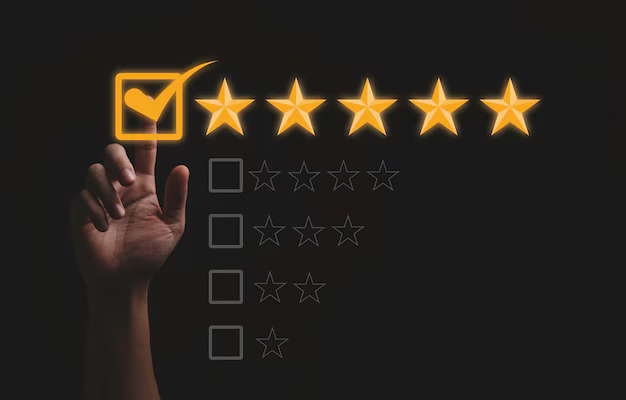What Is Considered Bad Research Data?
There’s a common phrase in marketing that all press is good press, but not all data that informs marketing is good data. Across all industries, from marketing to scientific research and psychology experimentation, data is important. As technology and the internet have become more prevalent, not all data has to be collected in person. That has made life easier for data collectors, but not necessarily data analyzers. In a time where data collection is mostly online with surveys being one of the most popular collection methods, it’s common to get bad research data.
What is Bad Research Data?
Bad data is when the data you receive is falsified, dishonest, corrupted, or misrepresentative of your sample in some way or another. You can get bad research data from subjects who aren’t answering honestly because they’re speeding through a survey, are answering dishonestly, or generally not being as serious about the survey as they should be. This can lead to data that gives you a false impression of what you’re studying or testing.
Another way to get bad research data is through bots and online programs that complete surveys for prizes or as a side effect of viruses. These online parasites can fill your surveys with data you don’t want and skew the results of your data collection overall.
How Can Bad Data Affect Your Project?
Bad data, in general, can ruin something like a study, an experiment, or a marketing campaign. If you have bad data, it can give you false impressions. You may think there is a pattern in your data when there truly isn’t. This can lead to you basing a thesis, a product, or a marketing campaign on an idea that is not true.
For example, if you put out several surveys about brands of cereal to a sample size of a town whose population could use the gift card you’re offering, you may not get accurate results. You may get subjects sending you the most positive survey responses to get a chance at the prize. This then leads to your data skewing positively, and you may market your new cereal product more in this area and areas like it, only to not find success.
While a bot can be obvious and something you can actively remove from your sample records, you can’t tell when people are being honest or just rushing through your survey. Sometimes you can, with technologies that record data, like how long each person looked at a question, but those features can’t confirm intention. Such features can only give you a good idea of what may be going on.
This makes it important to learn the signs and master the tools to catch bad research data before it’s too late.
How Do You Spot and Catch Data Outliers?
Data outliers are subjects and points of data that don’t match the sample population to an extreme level. In many cases, there’s a pattern to subject behavior based on certain factors. For example, you may see that higher-income homes spend more money when you put them on a chart, but you may see one point of data that doesn’t follow the pattern.
It’s common and healthy to have one outlier amongst a population. You can’t account for people with lives that are different from everyone else’s. What you can account for are consistent outliers that break from the pattern, but don’t do so in a way that makes a second pattern. There are three types of data outliers that lead to bad research data that can be easily described as speeders, liars, and bots.
Bad Data Outlier: Speeders
Speeders are as they sound, people who go as quickly through your survey as possible. They don’t put much thought into their responses or reactions. This can be good when the data want gut reactions, but that’s only for specific situations. For most projects involving data collection and research, you want to have accurate, well-thought-out responses in your data.
Many data collection tools allow you to see how long a person takes to answer questions. Using this tool alone isn’t enough. You and your team should be doing your survey or experimenting yourselves to judge how long something should take. If you find that there are a lot of people completing tasks faster than your well-mannered team, you may want to remove these data points or separate them from the rest for more accurate information.
Bad Data Outlier: Liars
Liars cover a lot of ground. This includes subjects you repeat and redo surveys under multiple names to increase their chances of being rewarded. They will likely give different and inconsistent results, adding wild outliers to your data. Even if they are only dishonest one-time through, that is still an outlier in your study that you must address.
You want to catch liars before they take the survey or experiment. Ask them qualifying questions to join the survey, such as an address if the location is important to the survey. Having multiple from the same location or a wrong location should tip you off.
Another example would be asking a simple question, such as their occupation. If they answer honestly, it won’t seem suspicious, but if they give complicated answers, that can be a red flag. Asking them to explain or categorize their occupation can also send you red flags that tell you this person isn’t being honest.
Bad Data Outlier: Bots
Bot data is potentially the worst data one can allow into their research because it is 100% fake. A person speeding through a survey or experiment can still give you honest information. Even a liar could be emulating people. A bot is 100% fake and offers nothing of worth to your data other than how well your data protection techniques and programs are performing. The information they give depends wholly on the bot’s programming. If a bot or bots have gotten into your research data, it may be super obvious, or not at all.
Luckily, most bots are not intelligent enough to get through tests of humanity. You’ve likely seen tests where you prove you are not a robot, like picking out images that contain a certain item. Bots don’t have eyes to read the screen, they’re only able to read the text as of now. Asking questions like this can prevent bots from getting into your data, and check the timestamps for your surveys to be sure none got through. While speeders are fast, bots are usually inhumanely fast.
Qualitative and Quantitative Research For Your Project
Making sure that research data is accurate with trustworthy sample sizes can be a job in itself. Rather than try to protect your data against all the risks involved in its collection, talk to Focus Forward. We know how important research is to any project and have years of experience in protecting our clients’ research data from bad data for both qualitative and quantitative research.
Our team can provide research data that can prove critical to the results of your research project and your business overall. Contact us to learn more about how Focus Forward can help you conduct market research.






